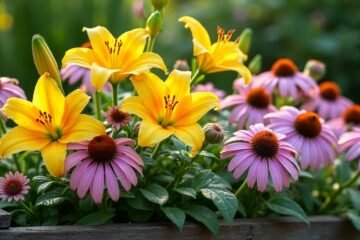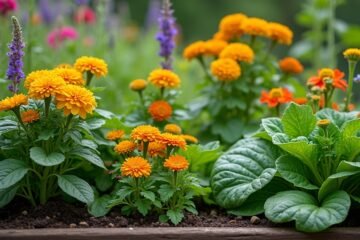To create a thriving vegetable garden, you’ll want flowers that do more than just look pretty! Marigolds act like tiny bodyguards, shooing away pesky aphids, while nasturtiums add a peppery crunch to your salads and keep bugs at bay. Don’t forget about cheerful sunflowers, attracting bees and giving your plants some shade! With vibrant blooms like calendula and bee balm, your garden will be a bustling haven. Curious about which blooms can work wonders next? Keep exploring!
Marigolds: Nature’s Pest Repellent
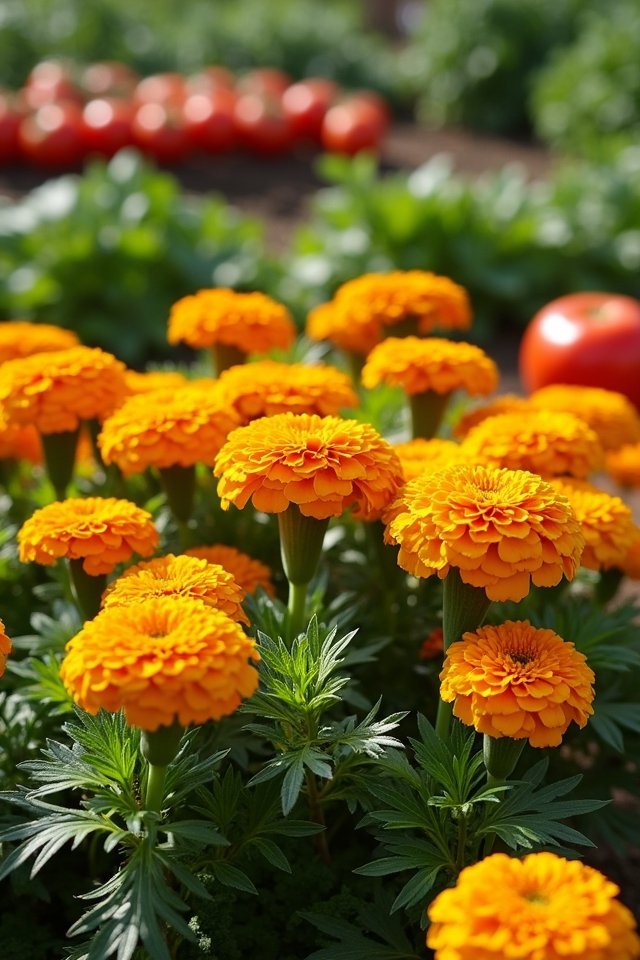
When it comes to creating a thriving vegetable garden, adding marigolds is like inviting nature’s very own pest-fighting superheroes! These vibrant, cheerful flowers don’t just brighten your garden; they also bring marigold benefits that protect your precious veggies. As you explore companion planting, picture those feisty marigolds working overtime, warding off pesky nematodes and unwanted insects like aphids. You’ll love how their pungent scent sends pests packing, leaving your crops untouched. Imagine a backyard oasis where your tomatoes flourish, thanks to their feathery friends nearby! And let’s not forget, marigolds attract pollinators, too! So, why not adopt this colorful strategy? With marigolds, you’re not just planting flowers; you’re cultivating an ecosystem bursting with life and flavor! 🌼
Nasturtiums: Edible Flowers That Deter Pests
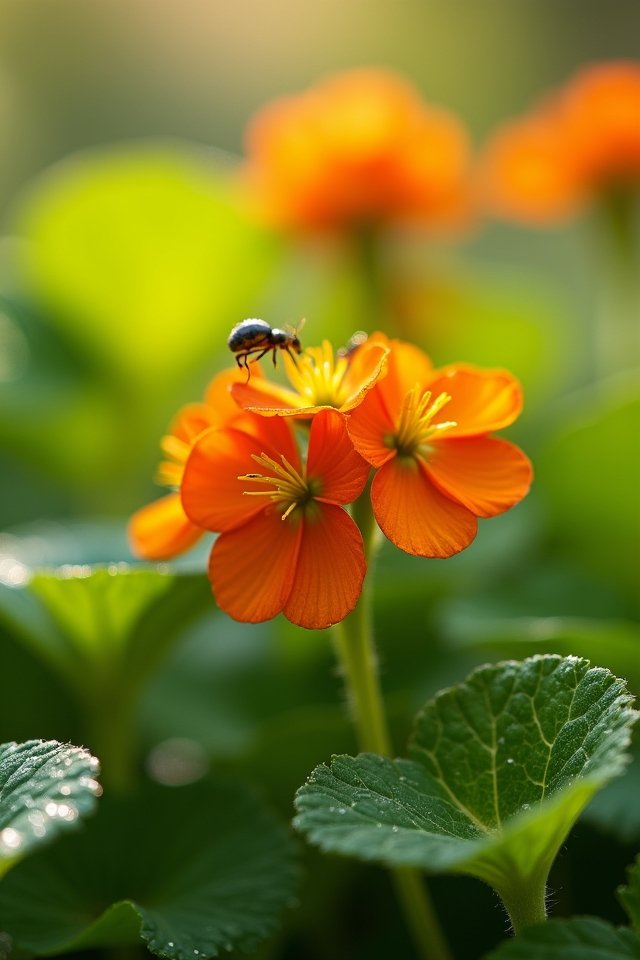
If you thought marigolds were the only colorful allies in your garden’s pest-fighting brigade, get ready to meet the dazzling nasturtiums! These vibrant blossoms not only bring a burst of color, but also pack a punch in pest deterrence. With their peppery flavor, they’re not just pretty faces; you can munch on them in salads too!
Planting nasturtiums creates a natural barrier against aphids and whiteflies, keeping your precious veggies safe. Imagine strolling through a garden filled with their bright oranges and yellows, feeling proud of your inventive pest control. Plus, their lush leaves attract beneficial insects! So go ahead—let these edible gems add both beauty and protective power to your thriving veggie paradise!
Borage: Beneficial for Pollinators and Soil
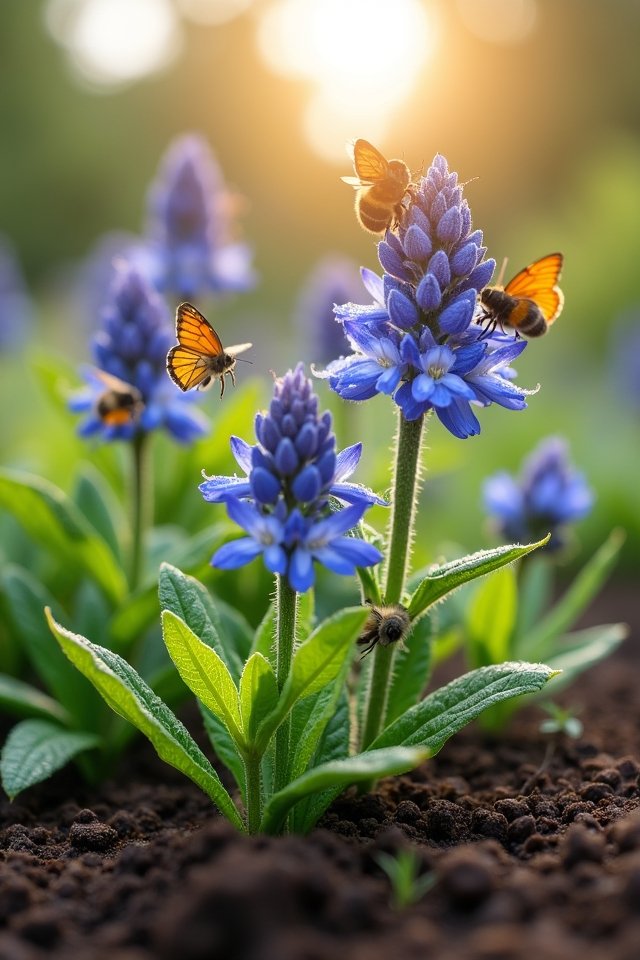
Borage is like nature’s best-kept secret, and once you discover its magic, you’ll wonder how you ever gardened without it! This vibrant blue flower not only attracts pollinators but also boosts your garden’s health. Think of borage benefits as a two-for-one deal: its pretty blooms draw in bees and butterflies, while its deep roots work wonders for soil enrichment. As borage decomposes, it releases nutrients like potassium that feed your vegetables. Plus, its lovely leaves offer a revitalizing cucumber taste in salads—talk about multi-tasking! So, why not plant a few borage seeds and watch this powerhouse flower work wonders in your garden? It’s time to welcome the extraordinary with borage! Your plants will thank you!
Sunflowers: Attracting Bees and Offering Shade
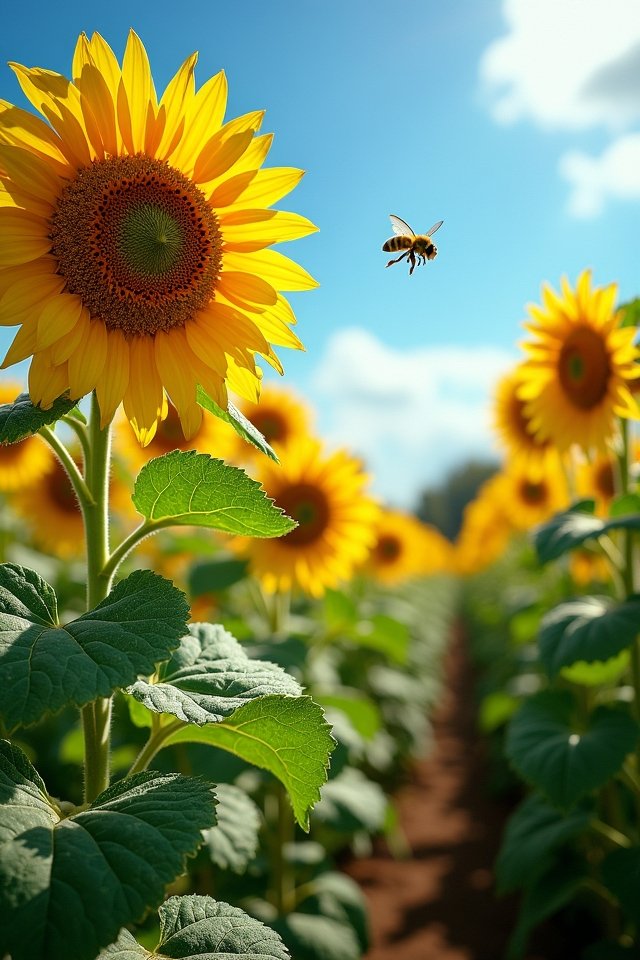
Sunflowers are like the sun’s cheerful sidekicks, standing tall in your vegetable garden, dancing in the breeze, and catching the eyes of hungry bees! These vibrant blooms not only add a splash of color but also attract crucial pollinators, enhancing your garden’s liveliness. With sunflower varieties like the dwarf or giant, you can find the perfect fit for your space. The sunflower benefits extend beyond beauty; their broad leaves offer shade for your more delicate plants, helping to regulate temperature and moisture. Imagine your tomatoes basking in the glow of sunshine while being cradled by these sturdy giants! So why not incorporate sunflowers and watch your garden flourish? After all, what’s better than a garden that’s buzzing with life?
Calendula: Boosting Vegetable Productivity
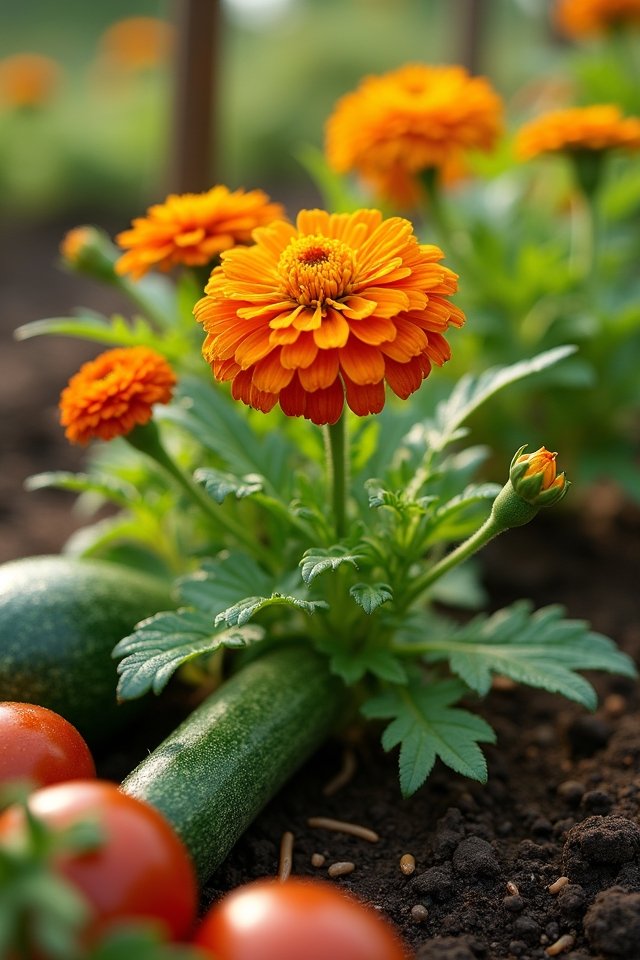
As you dig your hands into the soil and cultivate your vegetable garden, you might want to contemplate adding a splash of color with calendula! These vibrant flowers aren’t just pretty faces, either; they offer fantastic calendula benefits. When you plant them alongside your veggies, you’re engaging in companion planting. Calendula’s natural pest-repelling powers keep those pesky insects at bay, ensuring your tomatoes and peppers thrive! Plus, their blooms attract beneficial insects like ladybugs — nature’s little bodyguards. Imagine your garden bursting with color while yielding delicious crops. You’ll have an edible masterpiece! So, what’s stopping you? Add calendula to your garden palette and watch as productivity flourishes amidst the radiant blossoms! You’ll love the results, guaranteed!
Zinnias: Brightening Your Garden While Attracting Pollinators
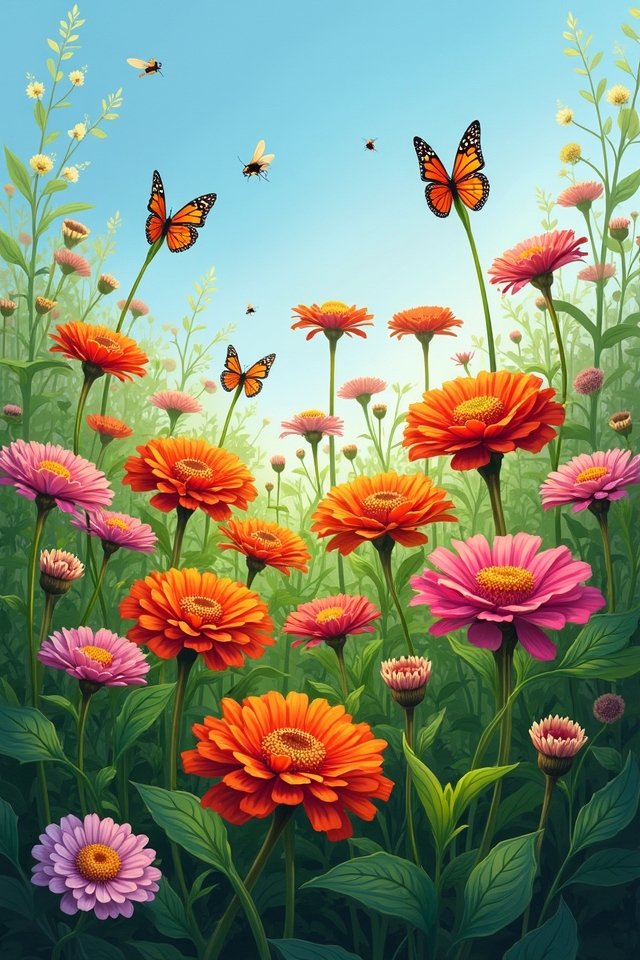
Imagine strolling through your vegetable garden, and then BAM! You spot a splash of color like no other—zinnias in full bloom! These vibrant flowers aren’t just pretty faces; they’re essential for attracting buzzing buddies, the pollinators. With various zinnia varieties, like the rich burgundy ‘Wine’ or the sunny ‘Yellow Halo,’ you’ll entice bees and butterflies, creating a lively ecosystem. Did you know pollinator preferences lean towards these beauties? They love zinnias’ open shapes, making it easy for them to gather nectar. So, why not add a few zinnia patches next to your tomatoes and cucumbers? Your garden will pop with personality, and your veggies will thrive! Isn’t that the dream? Get planting and watch the magic unfold!
Cosmos: Enhancing Biodiversity in Your Garden
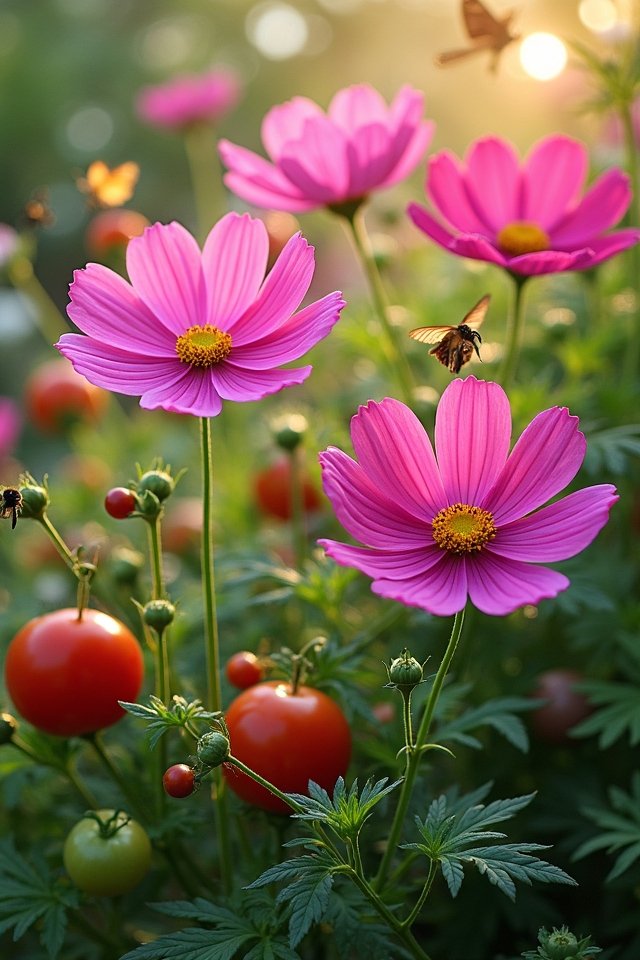
If zinnias are the stars of your garden, then cosmos are like the charming sidekick that brings even more fun and excitement! These vibrant flowers come in various cosmos varieties, creating a lively tapestry of colors, from soft pastels to fiery reds. Besides their beauty, cosmos benefits your vegetable garden in multiple ways:
- Attracts beneficial pollinators like bees and butterflies.
- Provides natural habitat for predatory insects, promoting pest control.
- Enhances biodiversity, which helps stabilize your garden’s ecosystem.
- Improves soil health with their deep roots, preventing erosion.
Lavender: Natural Repellent With Aromatic Benefits
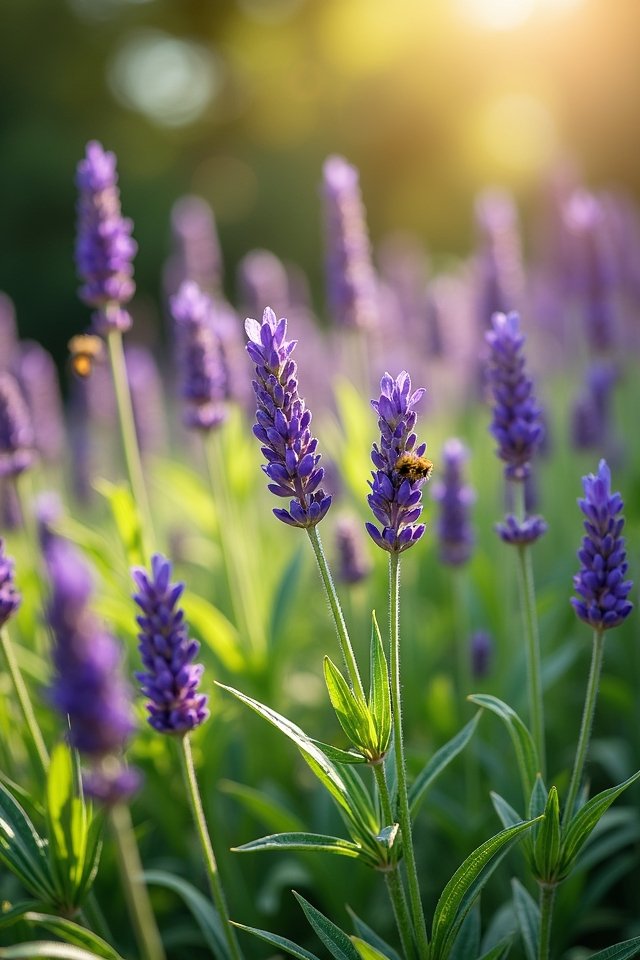
While you might think of lavender as simply a lovely addition to your garden, it serves a much greater purpose! This wonderful flower isn’t just about its stunning purple blooms and delightful fragrance; it’s one of nature’s best-kept secrets. Imagine a garden where pests fade away, leaving your vegetables to thrive! That’s the magic of lavender benefits. You can use lavender as a natural repellent for pesky bugs like aphids and mosquitoes. Just plant it nearby, and let its aromatic charm do the work! Plus, its soothing scent can transform your outdoor space into a tranquil retreat. So go ahead, sprinkle some lavender in your garden and watch how it enhances both your plants and your delightful gardening experience!
Cleome: Attracting Predatory Insects
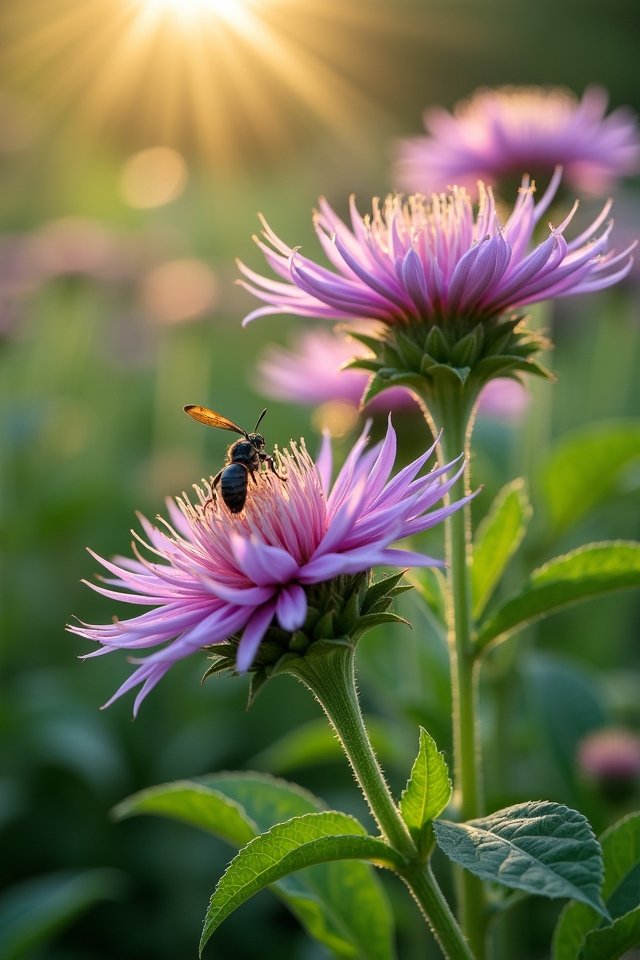
Cleome, often called spider flower, is your garden’s secret weapon when it comes to attracting beneficial insects! These charming blooms not only add color but also encourage predatory insects to pay a visit. Want to know the cleome benefits? Check this out:
- Diverse Habitat: They provide shelter for ladybugs and lacewings—your tiny garden superheroes!
- Pollen Power: Their nectar attracts parasitic wasps, keeping pesky aphids in check.
- Pest Deterrent: Cleome’s scent can confuse harmful insects, giving your veggies a fighting chance!
- Visual Appeal: They stand tall and proud in your garden, boasting lovely, spiky flowers!
Sweet Alyssum: Ground Cover That Draws Beneficial Bugs
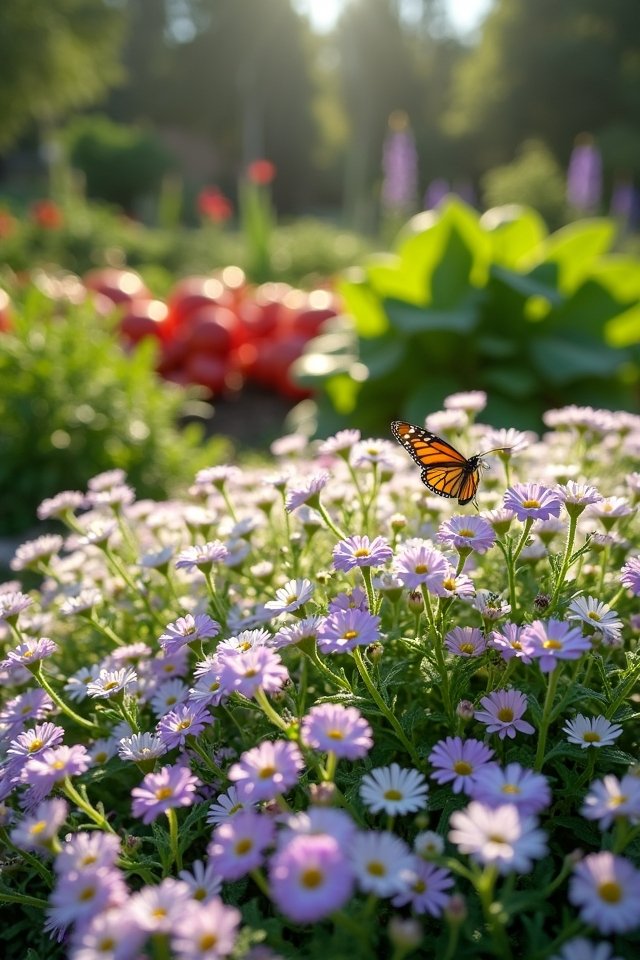
Imagine strolling through your vegetable garden, greeted by a sea of tiny, sweet-smelling flowers that not only look adorable but also serve a purpose! Sweet Alyssum is your go-to companion plant for innovative pest management! This charming ground cover attracts beneficial bugs, like ladybugs and lacewings, that feast on pesky aphids. It’s like throwing a party for nature’s own pest controllers! Plus, it’ll cozy up to your veggies, suppressing weeds while keeping the soil cool and moist. You’ll love how these little blooms create a beautiful tapestry while providing a sustainable solution to those garden headaches. So, why not invite Sweet Alyssum into your gardening family? Trust me, they’ll make your plot the talk of the town!
Bee Balm: A Favorite of Pollinators and Gardeners
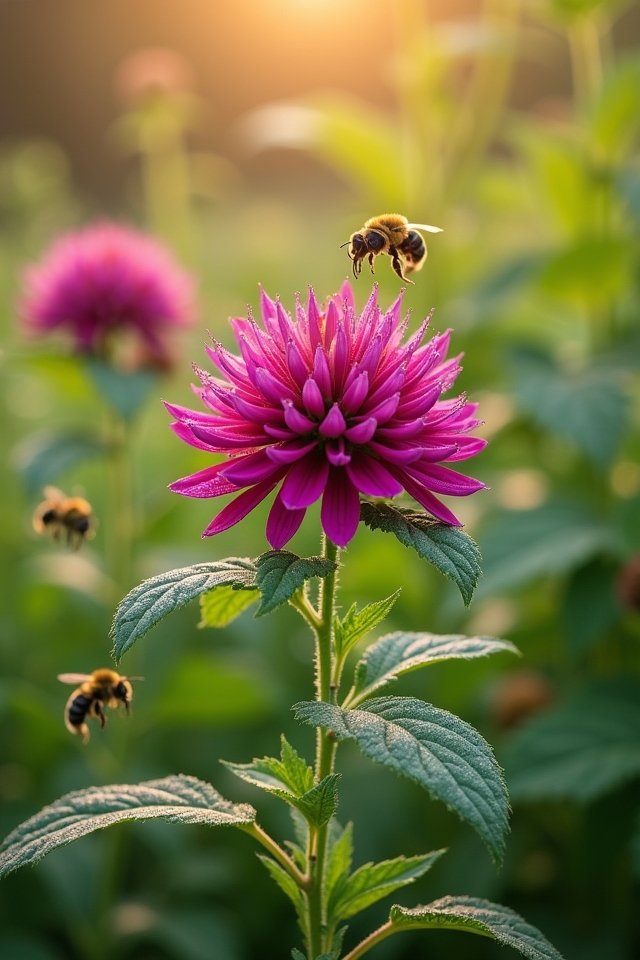
When you step into your vegetable garden, don’t be surprised if you hear the cheerful buzz of bees—they’re drawn to the vibrant blooms of Bee Balm! This perennial beauty not only catches your eye but also satisfies pollinator preferences, boosting your garden’s health. Imagine a flurry of activity as bees flit from flower to flower, a delightful sight for any gardener.
Here’s why Bee Balm is a must-have:
- Attracts hum of bees and butterflies
- Enhances garden aesthetics with colorful blooms
- Offers medicinal benefits with its aromatic leaves
- Thrives in various soil types, it’s practically carefree!
Plant some Bee Balm, and watch your vegetable garden thrive, filled with life and colors!
Frequently Asked Questions
Can Flowers Harm My Vegetable Plants in Any Way?
Sure, flowers can harm your vegetable plants in a couple of sneaky ways! Some beautiful blooms have flower toxicity, releasing substances that can deter growth or even poison your veggies. Plus, certain flowers might attract pests like aphids or whiteflies, turning your garden into a buffet for unwelcome diners! So, while they’re pretty, think carefully before you mix them! Remember, a happy garden‘s all about balance and nurturing your plants!
How Can I Incorporate Flowers Into a Small Garden Space?
Incorporating flowers into your small garden space can be a delightful adventure! Think of it as adding a splash of color to a masterpiece! You can practice companion planting by mixing vibrant marigolds with your veggies, keeping pesky pests at bay. Try planting cheerful nasturtiums alongside your tomatoes for added flavor! Plus, those blooming beauties enhance your garden aesthetics, making it a feast for the eyes! Who wouldn’t want a garden that’s both functional and fabulous?
What Is the Best Time to Plant Flowers With Vegetables?
You won’t believe how growing flowers alongside veggies can turn your garden into the talk of the town! For the best results, align your planting schedule with the warmth of spring. Companion planting is key; pairing marigolds with tomatoes can repel pesky pests. Aim to plant flowers about two weeks after your veggies. Colorful blooms not only attract pollinators but also give your garden that vibrant, magical touch. Isn’t that just delightful?
Will Certain Flowers Compete With Vegetable Growth?
You might be wondering if certain flowers will hog nutrients from your veggies, right? Ah, the art of flower vegetable compatibility! Fear not! With companion planting, you can pair blooms like marigolds or nasturtiums alongside your veggies. These flowers repel pests and attract pollinators, turning your garden into a vibrant carnival! Just imagine bees dancing around, while your veggies thrive like they’re at a buffet! Choose wisely, and enjoy the colorful synergy!
How Do I Maintain Flowers While Caring for Vegetables?
Maintaining flowers while caring for veggies feels like juggling flaming torches, but you’ve got this! Start with companion planting—marigolds deter pests while attracting pollinators. Water both your flowers and veggies early in the morning, so they stay fresh like a dewy meadow. Don’t forget flower care: deadheading keeps blooms vibrant and encourages more growth! Plus, who doesn’t love a garden that’s a feast for the eyes and the stomach? Keep shining!
